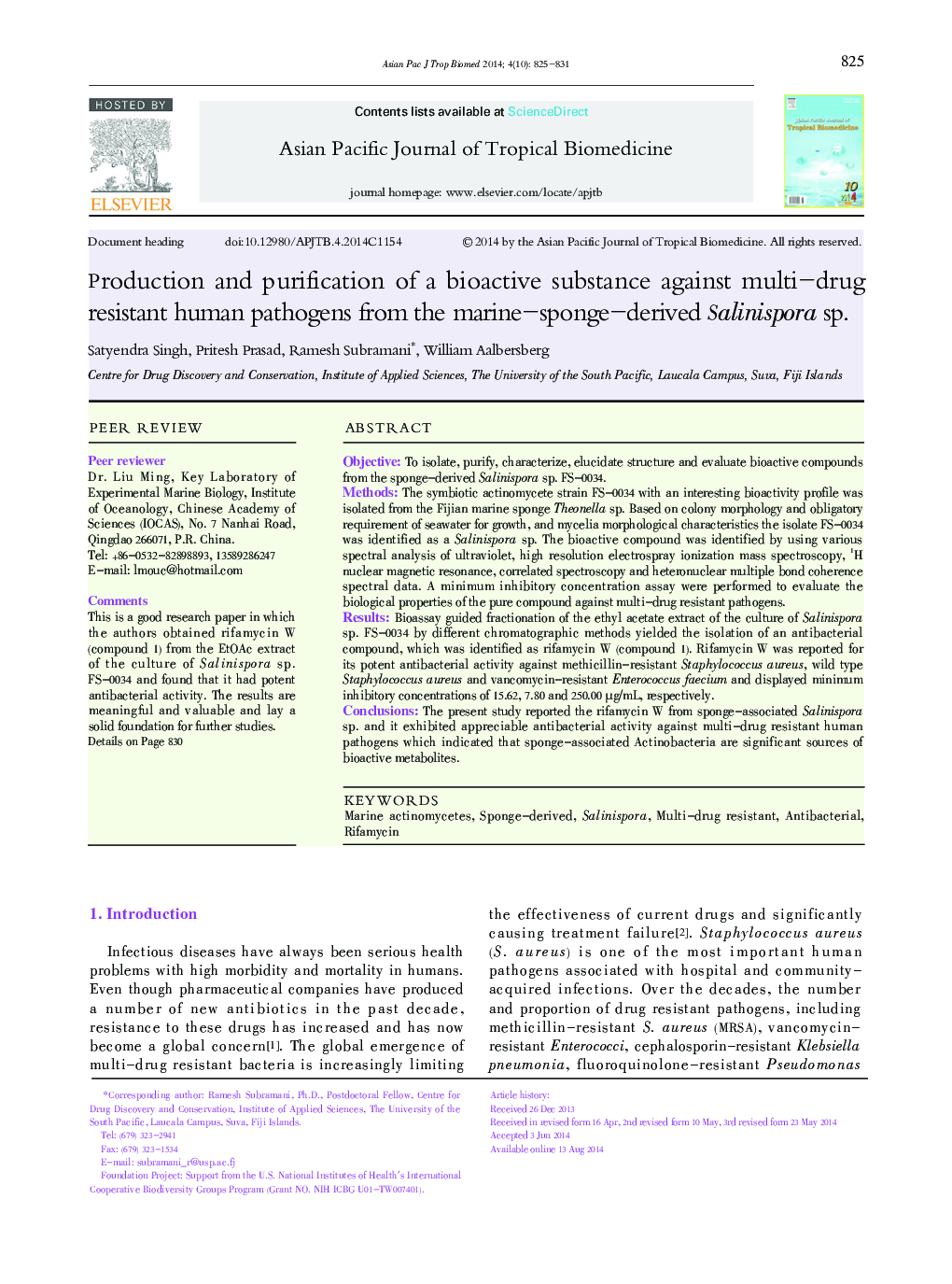| Article ID | Journal | Published Year | Pages | File Type |
|---|---|---|---|---|
| 2032883 | Asian Pacific Journal of Tropical Biomedicine | 2014 | 7 Pages |
ABSTRACTObjectiveTo isolate, purify, characterize, elucidate structure and evaluate bioactive compounds from the sponge-derived Salinispora sp. FS-0034.MethodsThe symbiotic actinomycete strain FS-0034 with an interesting bioactivity profile was isolated from the Fijian marine sponge Theonella sp. Based on colony morphology and obligatory requirement of seawater for growth, and mycelia morphological characteristics the isolate FS-0034 was identified as a Salinispora sp. The bioactive compound was identified by using various spectral analysis of ultraviolet, high resolution electrospray ionization mass spectroscopy, 1H nuclear magnetic resonance, correlated spectroscopy and heteronuclear multiple bond coherence spectral data. A minimum inhibitory concentration assay were performed to evaluate the biological properties of the pure compound against multi-drug resistant pathogens.ResultsBioassay guided fractionation of the ethyl acetate extract of the culture of Salinispora sp. FS-0034 by different chromatographic methods yielded the isolation of an antibacterial compound, which was identified as rifamycin W (compound 1). Rifamycin W was reported for its potent antibacterial activity against methicillin-resistant Staphylococcus aureus, wild type Staphylococcus aureus and vancomycin-resistant Enterococcus faecium and displayed minimum inhibitory concentrations of 15.62, 7.80 and 250.00 μg/mL, respectively.ConclusionsThe present study reported the rifamycin W from sponge-associated Salinispora sp. and it exhibited appreciable antibacterial activity against multi-drug resistant human pathogens which indicated that sponge-associated Actinobacteria are significant sources of bioactive metabolites.
